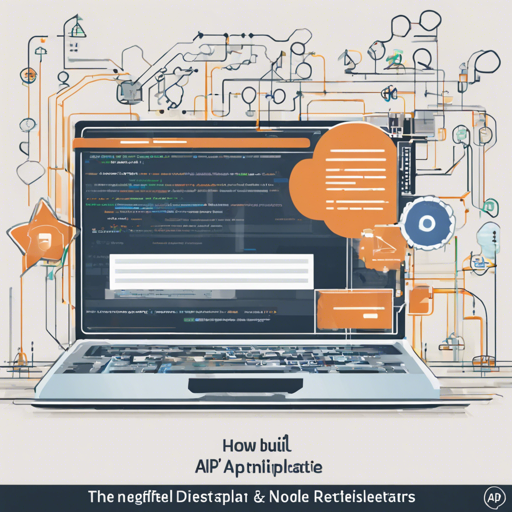Creating a robust RESTful API from scratch can be daunting, but with the right tools and frameworks, it can be a breeze. The Node Server Boilerplate for RESTful APIs simplifies this process, allowing you to focus on what you do best—building your application. In this blog post, we’ll walk you through the steps to get started using this boilerplate, as well as troubleshooting tips to ensure a smooth experience.
Quick Start
Setting up your project is incredibly simple with the Node Server Boilerplate. To create a new project, run the following command in your terminal:
npx create-nodejs-express-app project-nameAlternatively, if you prefer manual installation, you can follow these steps:
- Clone the repository:
git clone --depth 1 https://github.com/hagopj13/node-express-boilerplate.gitcd node-express-boilerplatenpx rimraf ..gityarn installcp .env.example .envUnderstanding the Code: An Analogy
Think of creating your API like building a restaurant. The boilerplate acts as the architectural plan for the restaurant:
- Environment Variables: These are like the essential ingredients you must have on hand, such as flour, sugar, or spices. They need to be precise to serve the best dishes.
- Controllers: Just like chefs in different cooking stations, they handle specific tasks like making appetizers (handling user data) or desserts (authenticating users).
- Routes: Think of this as the menu that lists what customers can order at the restaurant. Each route corresponds to a specific API endpoint.
By following the architectural plan (boilerplate) and keeping your ingredients organized (environment variables and configurations), you can create a well-functioning restaurant (API) that serves fulfilling meals (data) to hungry customers (users).
Troubleshooting Ideas
If you encounter issues during setup or development, consider the following troubleshooting tips:
- Ensure Node.js and npm are properly installed on your system.
- Check the version compatibility of the dependencies listed in the package.json file.
- If an error regarding missing environment variables appears, revisit the .env file and verify all required variables are set correctly.
- For documentation or API endpoint issues, ensure your server is running by navigating to http://localhost:3000/v1/docs.
- Debug any JWT issues by checking if the token is correctly generated and sent in headers.
For more insights, updates, or to collaborate on AI development projects, stay connected with fxis.ai.
Features Overview
This boilerplate comes with many built-in features, such as:
- NoSQL Database using MongoDB and Mongoose
- Authentication and authorization using Passport
- Logging with Winston and Morgan
- Continuous Integration with Travis CI
- Error handling and request validation using Joi
- API documentation generation with Swagger
Conclusion
The Node Server Boilerplate for RESTful APIs provides a structured, clean slate for developers to work efficiently. Whether you’re new to API development or looking to streamline your process, this boilerplate is a powerful ally.
At fxis.ai, we believe that such advancements are crucial for the future of AI, as they enable more comprehensive and effective solutions. Our team is continually exploring new methodologies to push the envelope in artificial intelligence, ensuring that our clients benefit from the latest technological innovations.

